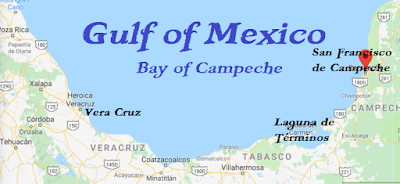The legend of “Maria” Hallet appears to have first begun in 1934 with a reprise in 1937 from Josef Berger, who wrote the 1930's classic Cape Cod Pilot. On pages 193-197, he regales the story of the "simple Eastham farm girl" of Cape Cod - and supposed wife of legendary pirate Samuel Bellamy - whose fate was linked with the wreck of Bellamy's Whydah.
Her name was said to be "Goody" Hallett. This has since been a legend concerning the Golden Age pirate from Devon, England, who captured the most prizes of any Caribbean pirate before the legendary Bartholomew Roberts six years after him.
But where did this legend come from? It certainly was not as old as Charles Johnson's A General History of the Pyrates.. coming up on 300 years! Halletts had been well-known and respected mariners in
Massachusetts for more than a century – never even associated with maritime disaster until
Elizabeth Reynard’s 1934 publication, The Narrow Land: Folk Chronicles of Old Cape Cod (1934). This legend has persisted to the present day. Indeed, in 1977, the Boston Herald published - on Halloween day, of course - the add below:
 |
| Boston Herald, 30 Oct 1777 |
This is almost certainly legend. It should be said that "Goody" or Mary or Maria Hallett has never been identified. No court records of her jailing or arrest have ever been found. Certainly, no bloody contract with Satan has ever appeared in print. And, no Cape Cod Hallett girl has ever been associated with "scuttling ships" off the Massachusetts coast.
Indeed, why make such pejorative slurs against
a 15-year-old girl named "Goody" or Mary Hallett, the alleged “Witch of Wellfleet?” I thought only narcissistic, misogynistic, and pedantic jerks like Donald J. Trump were prone to abuse young women, either in bathrooms, or - like the 16-year-old Swedish climate-change activist girl - on his Twitter account - even as his statuesque Slavic model wife yells at Democrat witnesses to stop mentioning her young son, Barron Trump in hearings! Did such tribal politics also come into play with young Miss Hallett?
Did she even exist for that matter?
Prior
to 1935, the only similar reference – at least in Massuchesetts newspapers –
was a shipping record for the vessel “Water Witch, of Wellfleet” in 1846. Furthermore, many vessels have carried "Witch" in their name. There have
been as many as 2,899 newspaper references for both “witch” and “Cape Cod” together
between 1716 and 1935, so the fairly recent Witch Trials of Salem in 1692 and the frequent devastating nor'easters probably
left a lasting mark upon local Cape Cod maritime history.
There was also Elizabeth Reynard’s other story about one Capt. Sylvanus
of Cape Cod who blamed his oversleeping and allowing his sails to be ripped away in
a storm upon the “Truro Hag” or witch – a woman in Truro who had sold him some milk – having drugged
him by poisoning the milk! Truro is only a few miles north of both Wellfleet
and Eastham), by the way.
Another legend may have been influenced in 1851 by
the wreck of Water Witch of Salem on
those same shores. In fact, maritime disasters were so common in Massachusetts that
19th century newspapers carried a “Disasters” column in their
shipping section!
Culturally, associating witches or other such ominous supernatural
phenomenon with disasters has been quite common in maritime folklore and
disasters on Cape Cod were indeed frequent. Marine insurance company rates of
the 19th century reflected Cape Cod’s shores as literally crawling
with such “witches” causing disasters to occur against their profit margins!
Still, why make the “witch” reference to a 15-year-old
“Goody” Hallett girl (note that the term “Goody” made a timely cultural reference
to the 1692 Witch Trials)? Was this simply a cultural recollection from 1692 - an attempt to demean the Hallett family as such a disaster?
There
may have been a coincident political reason to demean the Halletts of Cape Cod as
possessing of some... “evil!” And, in this case, there was plenty of evidence... hanging in a Massachusetts train depot shortly before the Civil War!
A well-known Anti-Masonic (later Whig) politician Chairman of the Democratic National Committee from 1848-1852 and US District Attorney for Massachusetts between 1853-57, appointed by President Franklin Pierce - and native of Cape Cod – named Benjamin Franklin Hallett suffered political derision as a “soldier of fortune,” a betrayer of “every party and faction,” and a
“flaming, intolerant, persecuting, temperance (anti-alcohol) man, and called loudly
upon all the friends of temperance” before his death in 1862. Long-time researcher of Hallet, Roberto Poli, tells that:
Hallet was a staunch abolitionist, and a militant protector of minorities such as the native Mashpee Indians of Cape Cod, whom he defended in court in 1833 against 'whites' stealing their property in their own land... The various slanderous epithets with which he was labeled come from an episode that drew great attention, both from the public and the press - the trial of Anthony Burns, a fugitive slave escaped from the estate of Charles F. Suttle in Alexandria, Virginia, in 1854, and arrested in Boston. The trial became one of the most controversial episodes involving slavery in the years leading to the Civil War. As an abolitionist, Hallett openly despised everything the Fugitive Slave Law of 1850 stood for; as a man of law, he was forced to use “reasonable force or restraint as may be necessary under the circumstances of the case” (Fugitive Slave Law, 1850; Section 6) to return fugitives to the claimants. Predictably, northern Democrats, fiercely opposed to slavery, heavily criticized him. He was described as a political machine, and was accused of turning his back to the cause. (added 2-1-2020)Aside from his nominal abolitionism, Hallett was seen in Massachusetts as often sided politically with Southern Whigs (ancestors of slavery proponents known as Southern Democrats) in the nationalist and anti-immigrant Know-Nothing party. He incurred northern wrath for this distinctly un-Massachusettian political position.
Stauffer Miller, author of Cape
Cod and the Civil War, mentioned that during
one slave trial in Boston, an unknown Cape Cod party felt that Boston
(but Cape Cod-born) politician Benjamin F. Hallett “was too allied with Southern interests and
suspended his effigy at the West Barnstable Depot. A note pinned to the effigy,
dressed in a black coat, fancy pants and black hat, read, ‘Benj. F. Hallett,
Attorney General for Southern Kidnappers. Cape Cod disowns the traitor to
liberty.’ Attached to the coattail was a copy of the Barnstabie Patriot, with
this message: ‘We would have hung the editor of this paper along with him but
for want of time.’ Hallett never saw the effigy, as it had been removed when
his train stopped at West Barnstable.”
Even for a "hardcore abolitionist," B. F. Hallet suffered terribly from this political misunderstanding, re: perceived sympathy for slavery, conservative slavers, or Southern Democrats, as Roberto Poli writes:
Even for a "hardcore abolitionist," B. F. Hallet suffered terribly from this political misunderstanding, re: perceived sympathy for slavery, conservative slavers, or Southern Democrats, as Roberto Poli writes:
It's not difficult to see why Hallett would be completely character-assassinated simply for being forced to apply the law [- return a slave to his owner]. The Burns [Anthony Burns, a fugitive slave escaped from the estate of Charles F. Suttle in Alexandria, Virginia, in 1854, and arrested in Boston] case was at the very early stages of his position as US DA, and once riots began on the streets of Boston (thousands of people gathered in front of the courthouse, shouting, spitting at and insulting the guards), Hallett's fate was sealed. He received specific directives via telegraph from the White House to increase the number of guards protecting the courthouse and Burns himself as he left the building, which was of course interpreted as an affront to liberty and dignity. At the end of the trial, thousands of people marched in protest on the streets; business owners hang black drapes outside their shops. Hallett was insulted publicly, and even assaulted in front of his home.
It may be that Massachusettians –
particularly in Cape Cod - were notably relieved by his death in 1862 as he
left a foul memory of their political opposition to - and hatred of - the South's peculiar institution of slavery. For their descendants today, Benjamin Hallett remained a disgusting reminder of tribal politics that precipitated the Civil War. This probably remained with his former constituents for decades, especially when white-supremacist resurgence flared once again in the early 20th century.
The
resulting political recollections possibly gave rise to the legend of Goody or
Maria Hallet, the “Witch of Wellfleet” – a posthumous way of damning Benjamin Hallett and his family forever and chastising them for ever giving birth to such a contemptible slavery-loving politician!
A Hallett girl, like Eve with an apple, a truly evil “Witch
of Wellfleet” may then have slithered upon the pages of Elizabeth Reynard’s Chronicles of Old Cape Cod in 1934.
References:
Elizabeth Reynard, The
Narrow Land: Folk Chronicles of Old Cape Cod (1934), reprint (Boston: Houghton-Mifflen, 1968); Cape Ann
Light and Gloucester Telegraph (Gloucester, MA), Jul 25, 1846, 4; National Aegis (Worcester, MA), Sep 30,
1840, 2; Nantucket Inquirer (Nantucket,
MA), Aug 29, 1840, 3; Boston Shipping
List, May 24, 1851, 1; Stauffer Miller, Cape
Cod and the Civil War: The Raised Right Arm (Mount Pleasant, SC: Arcadia
Publishing, 2010); Email interviews with Roberto Poli.












